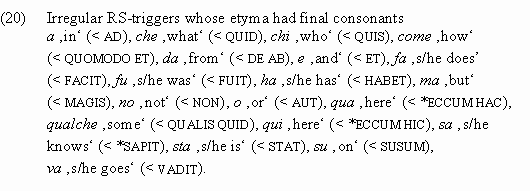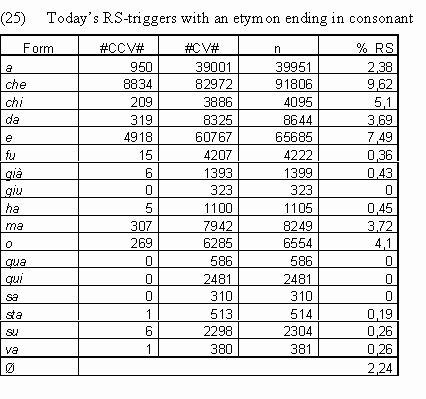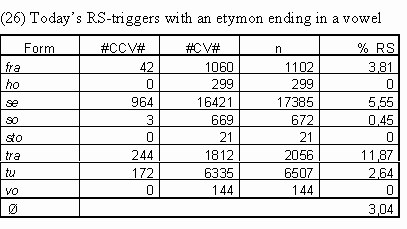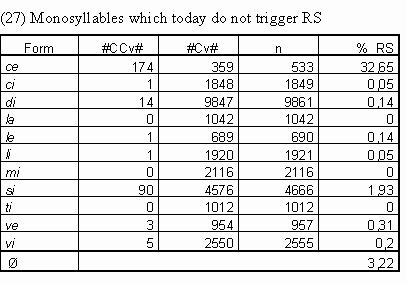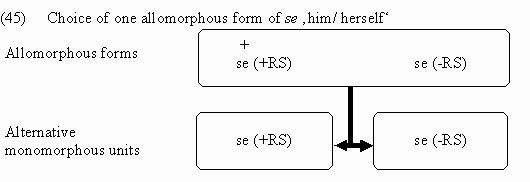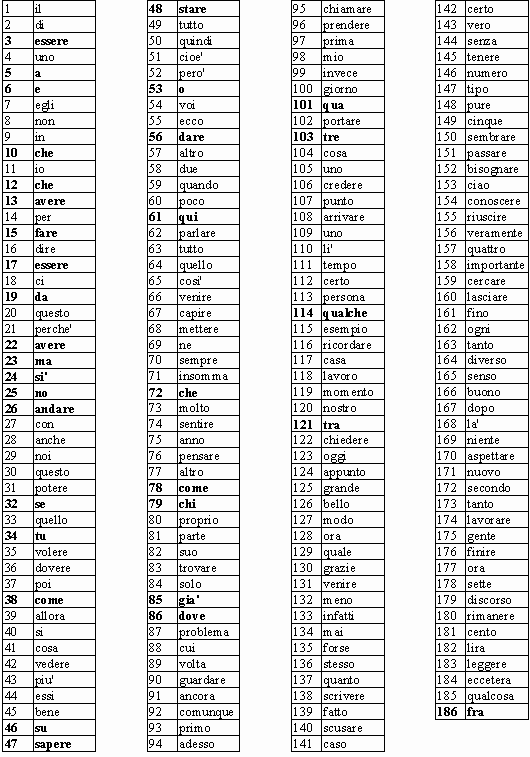Richard Waltereit (Tübingen)
Fossils of a former phonological rule:
Irregular raddoppiamento fonosintattico*
Raddoppiamento fonosintattico (RS) is a sandhi phenomenon of Italian with the effect of geminating initial consonants after certain words (the RS-triggers). There is an open and regular class of RS-triggers, which consists of all Italian oxytones, and a small, closed class of irregular RFS-triggers. Irregular RFS is triggered mainly by many (but not all) unstressed monosyllables. According to a widespread view, irregular RS is the direct residue of Latin consonant assimilation. Then there should be no irregular RS-triggers whose Latin etymon ended in a vowel. There are some, however. Even more puzzling is the fact that in Old Italian texts, whose spelling often reflects RS, there are even more irregular RS-triggers with etyma ending in a vowel. An alternative solution is to claim that in Old Tuscan RS was triggered not only by word stress but by phrasal stress too. This was the case especially in sequences of phonological clitics, where every first clitic could be stressed in order to comply with foot structure. Loss of rhythm-driven RS in the history of Italian resulted in a fossilization of RS with some of these phonological clitics, which incidentally are today's irregular RS-triggers. That rhythm-driven RS was fossilized with some words instead of simply disappearing is related to the fact that these words belong to the most frequent ones of the language, and obsolescent external sandhi may remain active in words with high token frequency (cf. Bybee 2001).
1 The problem of raddoppiamento fonosintattico (RS)
Raddoppiamento fonosintattico (henceforth RS) is a popular subject of study in Italian phonology. Essentially, RS is a phenomenon of external sandhi with the effect of geminating initial consonants after certain words (the RS-triggers). With respect to the choice of these words, there exists a regular, open and productive class of RS-triggers and a small, closed class of irregular RS-triggers. In this paper, I want to reassess the relationship between the two classes and to explain the composition of the irregular class.
1.1 Regular RS: Following all oxytones
The class of regular RS-triggers includes all Italian oxytones. All oxytones trigger gemination of the following word's initial consonant, whereas words that do not have main stress on the ultima do not:









 1), and the second of the geminates is the onset of the first syllable of the host word (
1), and the second of the geminates is the onset of the first syllable of the host word (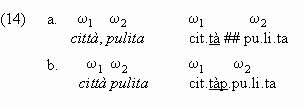



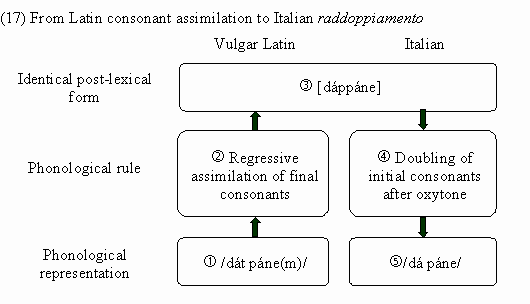
 underwent the Latin phonological rule of consonant assimilation (
underwent the Latin phonological rule of consonant assimilation ( ), thereby yielding the post-lexical string
), thereby yielding the post-lexical string  . From some point in time onwards, speakers (or, better: hearers) did not relate this to the phonological representation any more, probably because word-final consonants disappeared anyway. Rather, the geminates in the string
. From some point in time onwards, speakers (or, better: hearers) did not relate this to the phonological representation any more, probably because word-final consonants disappeared anyway. Rather, the geminates in the string  ), thereby creating a new phonological rule, i.e., raddoppiamento fonosintattico. As is typical for reanalysis as a type of language change, a secondary, previously not rule-governed property of some surface string, i.e., final stress in our case, is integrated into the rule, thereby remotivating the structure of the surface string. The Vulgar Latin assimilation rule of regressive assimilation
), thereby creating a new phonological rule, i.e., raddoppiamento fonosintattico. As is typical for reanalysis as a type of language change, a secondary, previously not rule-governed property of some surface string, i.e., final stress in our case, is integrated into the rule, thereby remotivating the structure of the surface string. The Vulgar Latin assimilation rule of regressive assimilation

